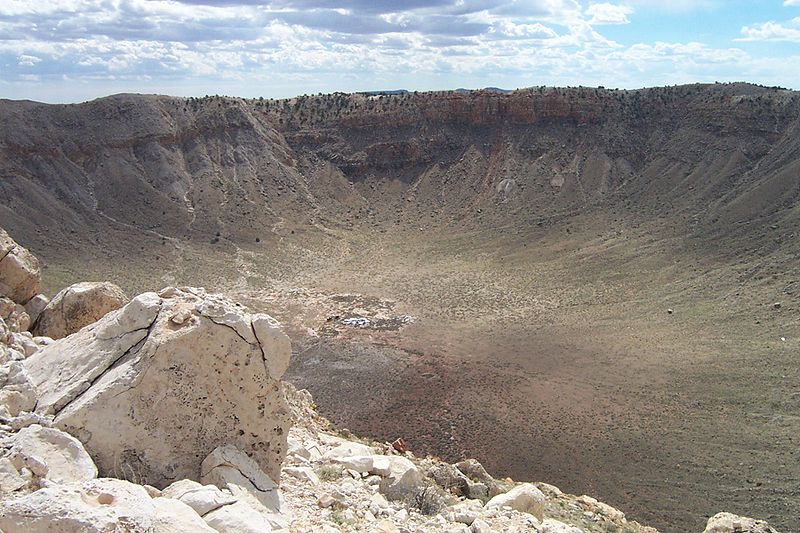Although geologists know a vast amount of knowledge about
the early earth the relationship between major
meteor striks, plate tectonics
and the depositation
of gold is completely theoretical.
Perhaps we shall never know if this happened during earth’s early
history unless we are unfortunate enough for it to occur again now. The reason this has stayed a theory is
because it is immensely preferable to the reality of a massive meteor strike.
The last time such an event occurred was the Chixculub
event at the end of the Cretaceous over 60 million years ago that wiped out
the dinosaurs smashed into the area of the Yucatan Peninsula of Mexico blasting
a crater 180 kilometers in diameter, and raising tsunamis estimated to be five
miles high. The asteroid causing this
event has been estimated to be 60 kilometers in diameter. It has been estimated by geologists it took
several seconds to penetrate the earth’s crust.
Today the remnants of this crater are buried under several thousand feet
of sediments.
Even though plate tectonics are well it understood by
geologists the root
cause of the phenomena as not very well understood, Vicki Hansen of the University
of Minnesota
 |
| An artist's rendition of the Chixulub Event that drove the dinosaurs to extinction By Don Davis/NASA |
Plate tectonics supply two of the heat
engines necessary to create mineral deposits, namely regional metamorphism
and volcanic or magmatic activity. The
third type that has only recently recognized is that caused by a major meteor
strike capable of penetrating the earth’s crust. It wasn't until the true
nature of the mineral deposits at Sudbury, Ontario was recognized as being caused
by a meteor strike that geologists started looking for similar deposits and
have discovered that virtually all large impact craters have associated mineral
deposit that are predominantly nickel and copper although precious metals are
including gold and platinum group metals are found as byproducts.


Bullion Exchanges is a well known Precious Metals Seller located in the heart of New York City's Diamond District.
ReplyDeleteBullion Exchanges have a wide variety of items including, precious metals that range from the ever popular gold and silver to the newly emerging platinum & palladium.
Bullion Exchanges are offering an enormous selection of products appealing to 1st time buyers and for established collectors.